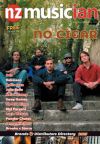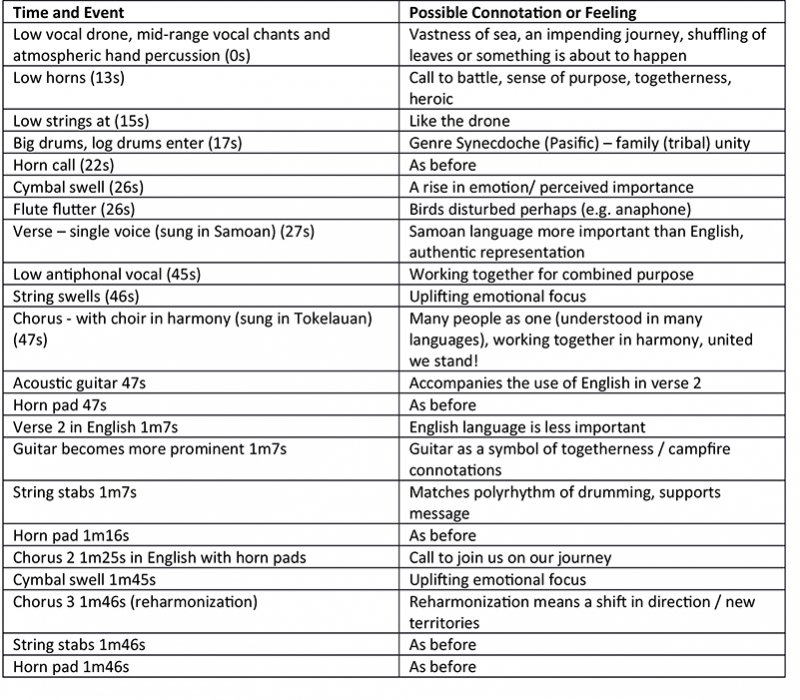X-Factory: Te Vaka – We Know The Way
X-Factory: Te Vaka – We Know The Way
Multi-award winning group Te Vaka are again amongst the finalist nominees for the 2018 Vodafone Pacific Music Awards, this time with a track entitled Lakalaka. They have previously won a number of major local awards including Best Pacific Music Album award for their albums ‘Tutuki’ (2004) and ‘Olatia’ (2007) from the NZ Music Awards and ‘Best Pacific Group’ in the 2008 Pacific Music Awards.
Featured on the cover of NZ Musician magazine back in 1999, Te Vaka is an enduring Oceanic music group performing original contemporary Pacific music that was founded in ‘95 by singer and songwriter Opetaia Foa’i. Te Vaka were heavily involved in the music for Walt Disney’s animation film Moana in late 2016.
Tracks from the soundtrack album entitled enjoyed considerable success worldwide with Oscar nominations and other accolades. Here in Aotearoa one song has charted for much longer than others on the soundtrack, We Know The Way remarkably enjoying 48 weeks in the NZ Top 20 during most of 2017. It was written by Te Vaka’s principle composer Opetaia Foa’i and US composer/performer Lin-Manuel Miranda.
This article will attempt to discover why that may be. I have borrowed heavily from Philip Tagg’s book, Music’s Meanings – A Modern Musicology for Non-Musos.
We Know The Way is best analysed using ‘semiotics’, which means the systematic study of sign systems, and is simply the process by which meaning is produced and understood. In broad terms semiotics allows music to be viewed using denotations and connotations that create multiple perspectives. Denotative qualities of a track include analytical observations such as chords, melodic structure, instrumentation, tempo etc. In terms of linguistics, it is the dictionary definition of a given word, not the implied feeling.
Connotation is the second level and beyond. It’s an idea or feeling that’s invoked by the literal meaning. It’s the emotional associations you make with signs (including musical elements), and not a literal interpretation of what the sign represents. For example with the word ‘rose’ or an image of a rose the denotation is a type of flower. A connotation of the same sign could be love, romance, or passion. The first is a literal representation, while the second is an implied representation.
In terms of signs, the first and perhaps most important sign is to be found in the title We Know The Way – connotations of this alone imply direction, meaning, togetherness, substance and purpose. In terms of recurring musical signs, the main elements include polyrhythmic drum patterns, string pads and stabs, horn pads, single vocal elements in two languages and vocal choruses. Although semiotics is a large and potentially complex field, I have singled out a few of the elements found in We Know The Way so you can get a sense of how semiotic analysis works.
Horns
Horns in unison, playing broad, strong consonant melodies in the upper middle register of the instrument, sound heroic, even in space (think Star Wars). This is despite the fact that the origins of that horn sound is shrouded in the historical mists of rural Europe when horns were used in hunting or to clear the road for stagecoaches. In We Know The Way connotations of horns include a call to battle and a shared purpose.
Drones
One simple and very common form of tonal polyphony is the use of a drone to accompany the melody. Drones are easiest to understand as the continuous notes that sound at the same pitch throughout part or whole of a piece of music. Drones are also used in AV productions as a suspension device to suggest either stasis (e.g. the stillness of wide open spaces) or, if booming in the bass register, an ongoing, oppressive threat. The drone in We Know The Way firstly connotes the vastness of the sea, and secondly an impending journey ahead.
String Pads
One of the most familiar sounds to Western ears must surely be the sound of orchestral strings bowed smoothly and without harsh dissonances to produce a slowly moving, continuous, chordal texture. This sort of sound produces a homogeneous, thick, rich, viscous sonic effect and connotes sensations of luxury, comfort and smoothness. Smooth strings heard in We Know The Way provide comfort to the backdrop of adventure, a positive feeling of security amongst adventure.
Lyrics
In an interview with Opetaia Foa’i, he talks about writing for Moana and the support from Disney that he received with his vision of keeping the music authentic. The languages heard in We Know The Way include Samoan (verse 1) and Tokelauan (chorus 1). Tokelauan can be understood by Samoans and Māori so it has a broad reach, and the connotations of singing in English last suggest an ‘island first’ purposiveness.
Drums
Tribal drums heard in We Know The Way act as a genre synecdoche (a part-for whole sign type referring to a musical style other than that of its immediate surroundings and, by extension, to extramusical aspects of the genre with which that ‘other’ musical style is associated). Log drums situate the music squarely in the Pacific, further reinforcing Pacifica values of unification, tribe (family) and support. Like the horn sound, the drums also connote a call to battle.
Semiotic Timeline
Here is a breakdown of some musical signs found in the 2min 21s track.
Summary
It’s difficult to analyse a densely symbolled song such as We Know The Way in such a brief article. This isn’t an academic column and I don’t want to make this an overly dry read, but treating this song in terms of a collection of signs that are deliberately congruent to the title and perceived meaning of the track is (I hope) a useful exercise.
Of course I write this analysis from a Pakeha/Disney perspective, and of course, it reads as such. We Know The Way is a celebration of Pasifika culture and Pasifika voyaging, celebrating the great Polynesian explorers who settled the Pacific. Hopefully, after reading this you can at least entertain the idea in part of the power of musical symbolism in popular culture, perhaps as a backdrop to why this song was so popular in New Zealand last year.
Dr Mark Baynes is Programme Manager for the Bachelor of Musical Arts degree at MAINZ, Auckland; a degree program that fosters students’ ability to find their own musical voice, culminating with the creation of a capstone project such as an album, film score or music for game audio. For more information visit www.mainz.ac.nz


